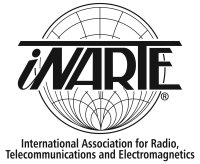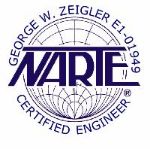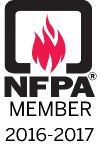Information Technology Equipment (ITE) Challenges
All electronic, digital or processor-controlled equipment located within commercial, industrial or retail facilities are, Information Technology Equipment (ITE).
As in all facilities no matter what equipment that exist personnel safety will always be first and equipment protection second and always second
The use of ITE equipment the following four (4) main categories:
- Installation
- Maintenance
- Performance
- Protection
Installation of ITE equipment requires selection of all the following:
- Codes
- A systematic statement of a body of law
- Regulations
- Rules made by executive departments and agencies, arranged by subject to the Code of Federal Regulations
- Standards
- Something established by authority, custom, or general consent as a model, example, or point of reference.
- Best practices
- Commercial or professional written procedures accepted or prescribed as being correct or most effective for safety, installation, maintenance, performance, and protection for maximum performance of the ITE equipment.
Maintenance of ITE Equipment
- Reduce Occurrences of Equipment Failures
- Minimize Downtime Duration
- Providing Accurate Method Tracking Maintenance Records For:
- Root Cause(s) of Downtime
- Downtime Occurrences
- Equipment Failures
- Equipment Life Cycle
- Total Cost of Downtime and or Equipment Failures (Including all Overhead Cost)
- Downtime Duration
Protection of ITE Equipment
- Maintain maximum safety for personnel and equipment
Performance of ITE Equipment
- Maintain the equipment reliability and continuity rate as high as possible
As ITE equipment increases in commercial, industrial or retail environments, so do problems related from power quality issues. Powering, grounding, bonding, and protection of ITE equipment continues to be a growing concern for power system designers and end users.
These concerns frequently materialize after start-up, then the operating ITE equipment problems begin to occur.
Efforts to alleviate problems have ranged from installing power conditioning equipment to applying grounding, bonding, and protection techniques not found in conventional grounding, bonding, and protection standards/best practices.
In some cases, this approach has led to unsafe conditions and violations of the National Electrical Code (NEC), without solving operating problems.
Many times, even after installing power conditioning devices, the protected equipment still fails or does not operate as expected during thunderstorms, power outages, or other power disturbances.
In response to these situations, other standards and best practices are required, to provide better equipment performance and equipment reliability for facilities.
The objective for grounding, bonding, and protecting ITE equipment is to provide a consensus of recommended codes, standards and best practices where conflicting information and confusion, stemming primarily from different viewpoints of the same problem exist.
The challenging part of grounding, bonding, and protecting ITE equipment is first to determine what type of network and protection exist and determining if it is actually working. If the ITE equipment has no downtime and no failures then the present grounding, bonding, and protection is working. If the ITE equipment has downtime and failures, then the present grounding, bonding, and protection might not be the right choice.
National Electrical Code: The purpose of the National Electrical Code (NEC) is the practical safeguarding of persons and property from hazards arising from the use of electricity.
The NEC contains provisions that are considered necessary for safety.
Compliance therewith and proper maintenance result in an installation that is essentially free from hazard but not necessarily efficient, convenient, or adequate for good service or future expansion of electrical use.
The NEC is A SAFETY CODE, not a PERFORMANCE STANDARD or a RELIABILITY STANDARD.
In all cases ITE equipment requires more than a safety code to ensure performance requirements for the end user.
Transient voltage disturbances associated with lightning, power surges and power system switching have emerged as a major concern for manufacturers and users of ITE equipment.
How to deal with lightning protection, surges, noise, and safety simultaneously, is complicated by conflicting philosophies advocated by people of different background.
Power-oriented engineers and signal-oriented engineers often differ in their perception of the problem and potential solutions.
Complaints about the quality of power today are not easily resolved, because they involve both a multitude of different causes and a variety of specific sensitivities in the affected ITE equipment.
A commonly applied solution to power incompatibilities is to install interface equipment such as power conditioners between commercial power and sensitive loads.
Difficulties in assessing the need to apply power interface equipment include the following:
- The inability to quantify precisely how much downtime is power related
- The subjective nature of estimating the cost of sensitive load miss operation that is attributable to power line disturbances
- A reluctance of end users to spend money on additional equipment they feel is not their responsibility to have to provide when they are already paying for the commercial electric power and for the ITE equipment that is being affected.
The cost/benefit aspects of the problem can be addressed, from a technical point of view in standards/ best practices, but detailed economic analysis and specific decisions remain the responsibility of the user.
Power system designers, utility companies, manufacturers and end users of ITE equipment need to cooperate with each other to find effective solutions to reduce the potential sources of interference, reduce the susceptibility of the load equipment, or apply power conditioning equipment.
Focusing on the technical issues, dispelling misconceptions, and implementing sound code, standards and best practices can assist the end user in making informed economic decisions.
Two of the goals are to promote a better understanding of the significant issues and to dispel misconceptions.
Fortunately, powering, grounding and protection of ITE equipment is fundamentally the same as any electrical system.
Estimate the load, matching current and voltage requirements, or planning for future growth involves the same basic information.
Similarly, designing an appropriate electrical distribution system, selecting and coordinating overcurrent protection, and assuring voltage regulation makes use of the same engineering practices.
The principles of grounding, bonding, and protection ITE equipment loads in the same way as to any other load.
Electrical protective devices in any type of facility have certain safety and or other functions to consider.
Circuit breakers, fuses, relays and reclosers are in place to remove the voltage during a phase fault. They are in place to protect personnel and equipment from shock hazards and to protect the cable from catching fire.
Power conditioners keep the sine wave and voltage level at a constant voltage which increases the life of ITE equipment.
Surge protection devices protect ITE equipment from lightning strikes and power surges (internal and external) which also increases the life of ITE equipment.
All power conditioners, surge protection devices, UPS’s, inverters, converters, power supplies, and other power devices are not equal. When selecting any of these devices, the end user needs to know exactly what they need for protecting the ITE equipment.
Some examples of electrical protection devices are lightning arresters, surge protectors, fuses, relays, circuit breakers, reclosers, and other devices. Every electrical circuit has a maximum voltage or amperage. When maximum voltage or amperage exceeds limits, the wire will overheat, causing the wire insulation to melt and fire to ignite.
Bonding Network (BN) is a set of interconnected conductive structures that provide an electromagnetic shield for electronic systems and personnel at frequencies from dc to low RF. The term electromagnetic shield denotes any structure used to divert, block, or impede the passage of electromagnetic energy. Most of the time, a BN has a connected to earth.
Every facility has a Bonding Network (BN). It is either designed or inherent to the facility by default.
The Most Common Types Of Bonding And Grounding Networks
- Multipoint Ground (MPG)
- Common Bonding Network (CBN)
- Sparse Common Bonding Network (SCBN)
- Signal Reference Structure (SRS)
- Mesh Common Bonding Network (MCBN)
- Isolated Bonding Network (IBN)
- Star Isolated Bonding Network (SIBN)
- Mesh Isolated Bonding Network (MIBN)
- Sparse-Mesh Isolated Bonding Network (S-MIBN)
- Single Point Connection (SPC)
- Single Point Connection Window (SPCW)
« Back to Blog






Comments